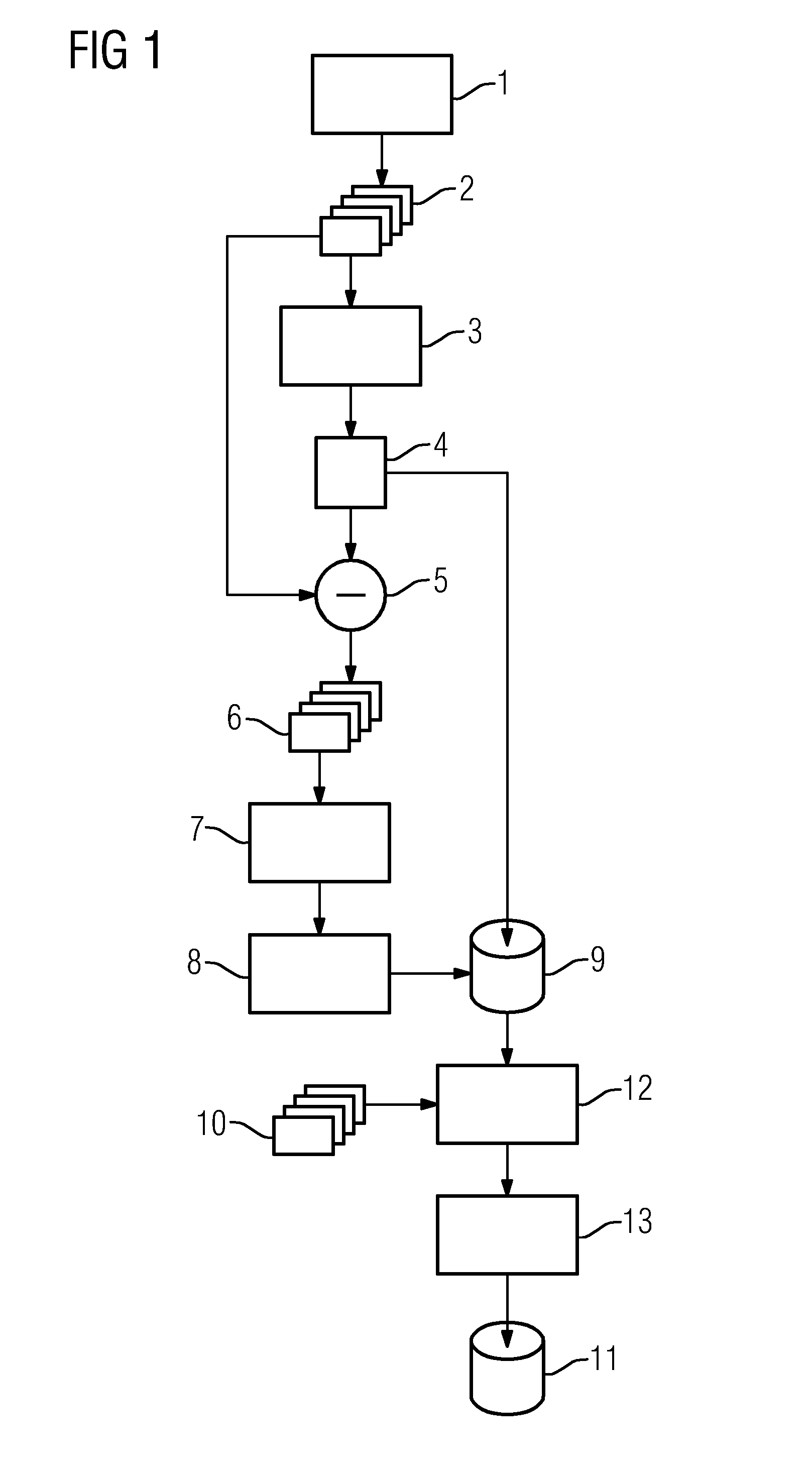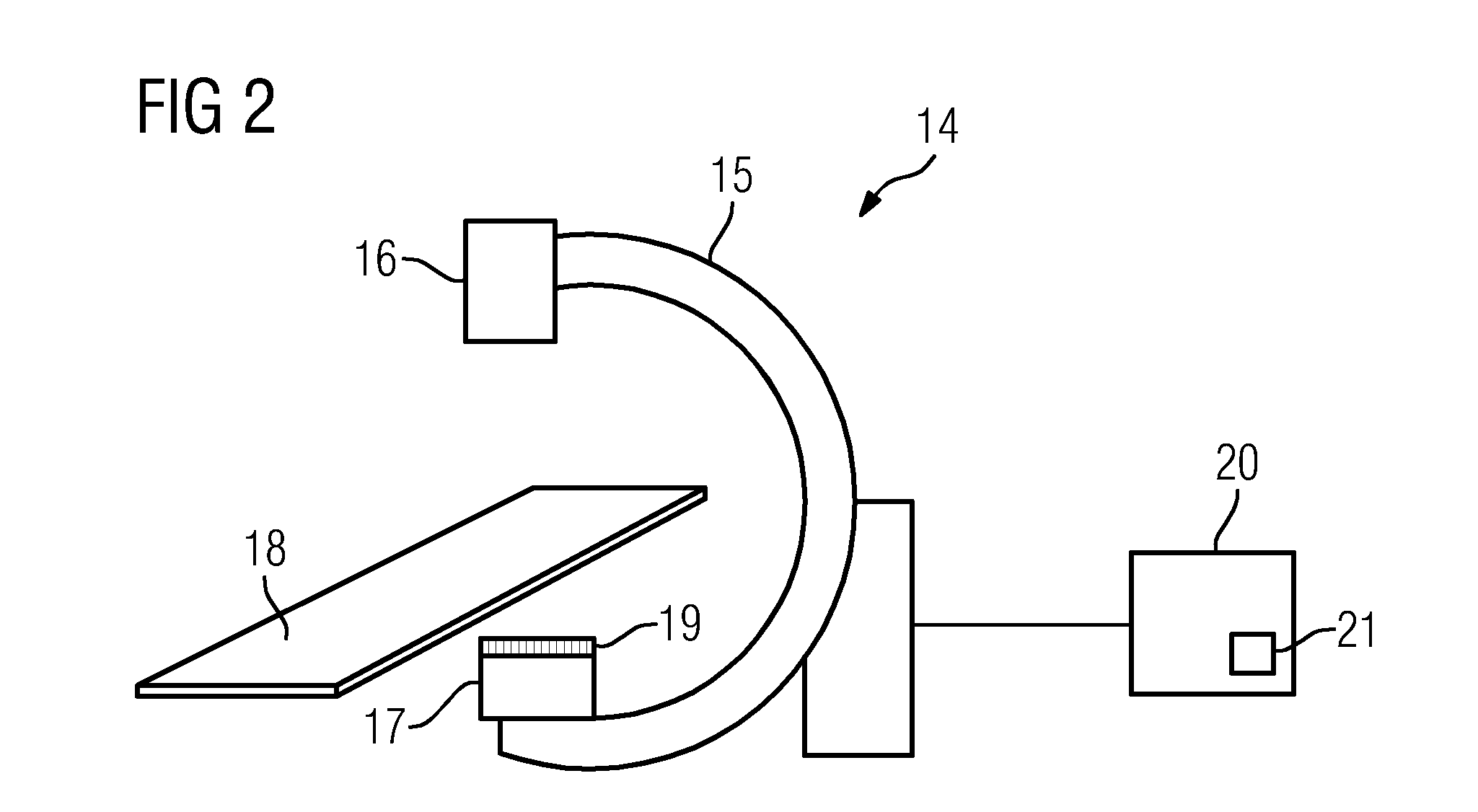Method for correcting image artifacts occuring as a result of an anti scatter grid
a technology of anti-scattering grids and image artifacts, applied in image enhancement, tomography, instruments, etc., can solve the problem of not being able to directly be used as correction images, and achieve the effect of reducing memory space requirements and reducing calibration efforts
- Summary
- Abstract
- Description
- Claims
- Application Information
AI Technical Summary
Benefits of technology
Problems solved by technology
Method used
Image
Examples
Embodiment Construction
[0033]The disclosed method, thus also the embodiment shown, involves a correction of artifacts occurring as a result of an anti scatter grid connected rigidly to the x-ray detector, thus in concrete terms to a correction of the projection images which are used for a three-dimensional reconstruction such that artifacts in the three-dimensional dataset are reduced. Such artifacts, as are considered in the embodiment shown here, ultimately have different causes. In addition to the artifact patterns which are necessarily produced by shadowing by a grid of the anti-scatter grid, intensity variations can also occur if an anti-scatter grid not focused on the correct distance between the x-ray source and the x-ray detector is used or the distance between the x-ray detector and the x-ray source is not adjusted so that the focusing distance is produced. These image effects related to shadowing are independent of the actual recording geometry, wherein effects also occur in any event which are ...
PUM
| Property | Measurement | Unit |
|---|---|---|
| distance | aaaaa | aaaaa |
| degree of freedom | aaaaa | aaaaa |
| computed tomography | aaaaa | aaaaa |
Abstract
Description
Claims
Application Information
 Login to View More
Login to View More - R&D
- Intellectual Property
- Life Sciences
- Materials
- Tech Scout
- Unparalleled Data Quality
- Higher Quality Content
- 60% Fewer Hallucinations
Browse by: Latest US Patents, China's latest patents, Technical Efficacy Thesaurus, Application Domain, Technology Topic, Popular Technical Reports.
© 2025 PatSnap. All rights reserved.Legal|Privacy policy|Modern Slavery Act Transparency Statement|Sitemap|About US| Contact US: help@patsnap.com



